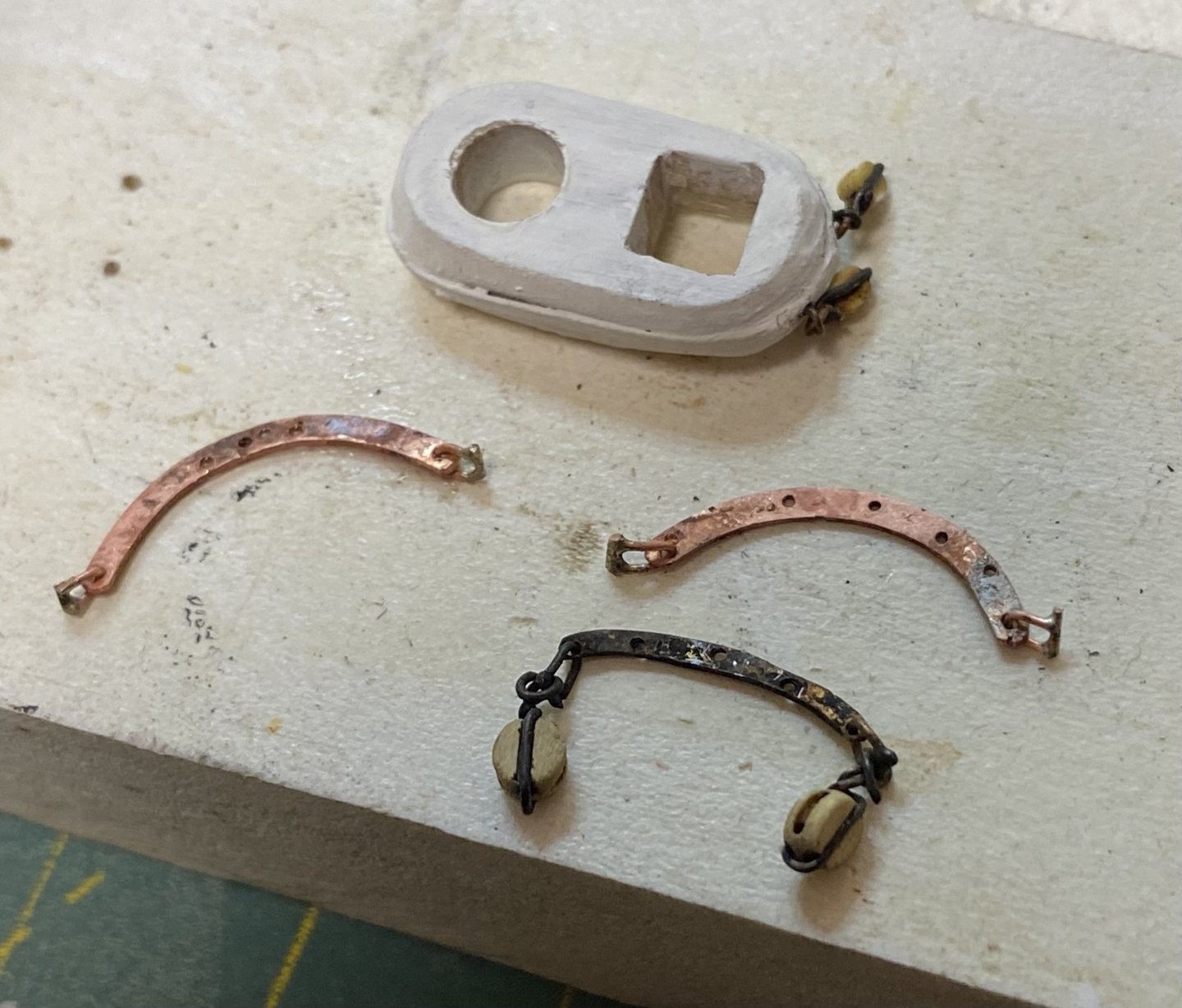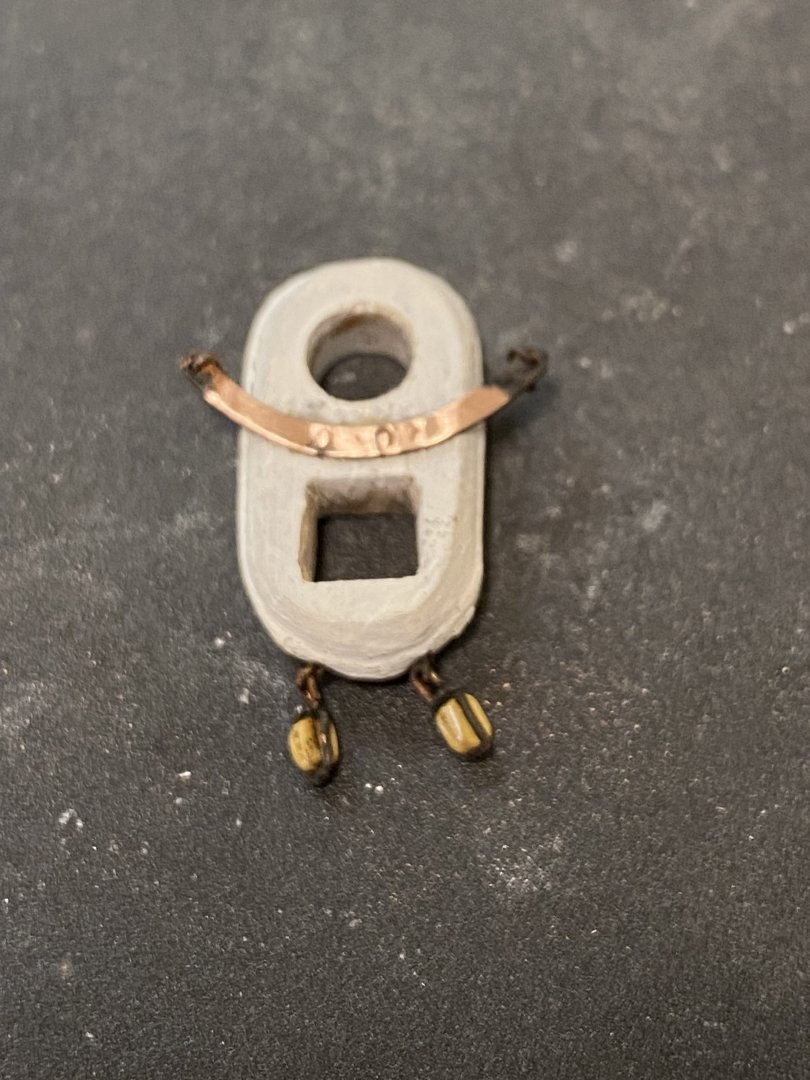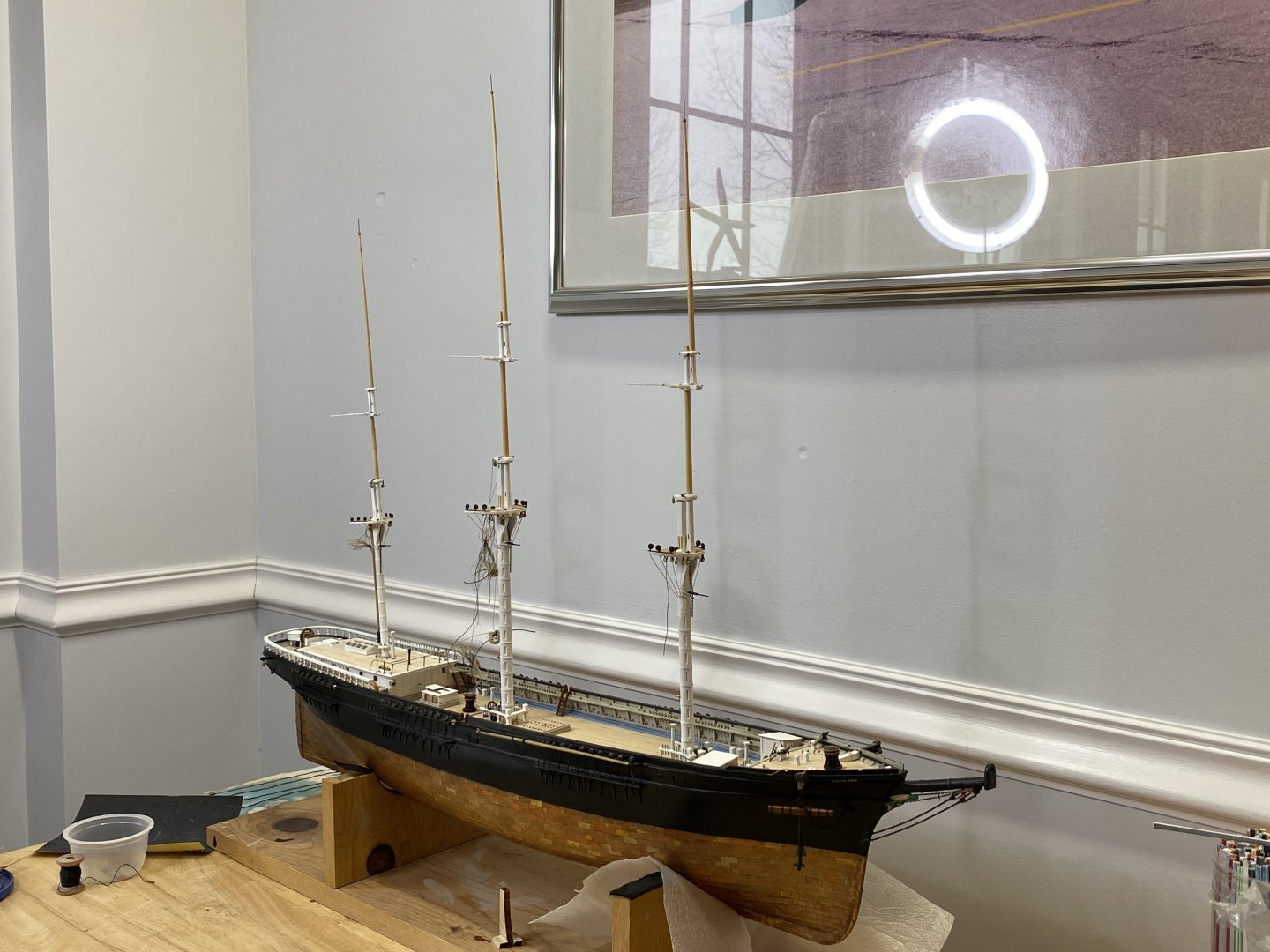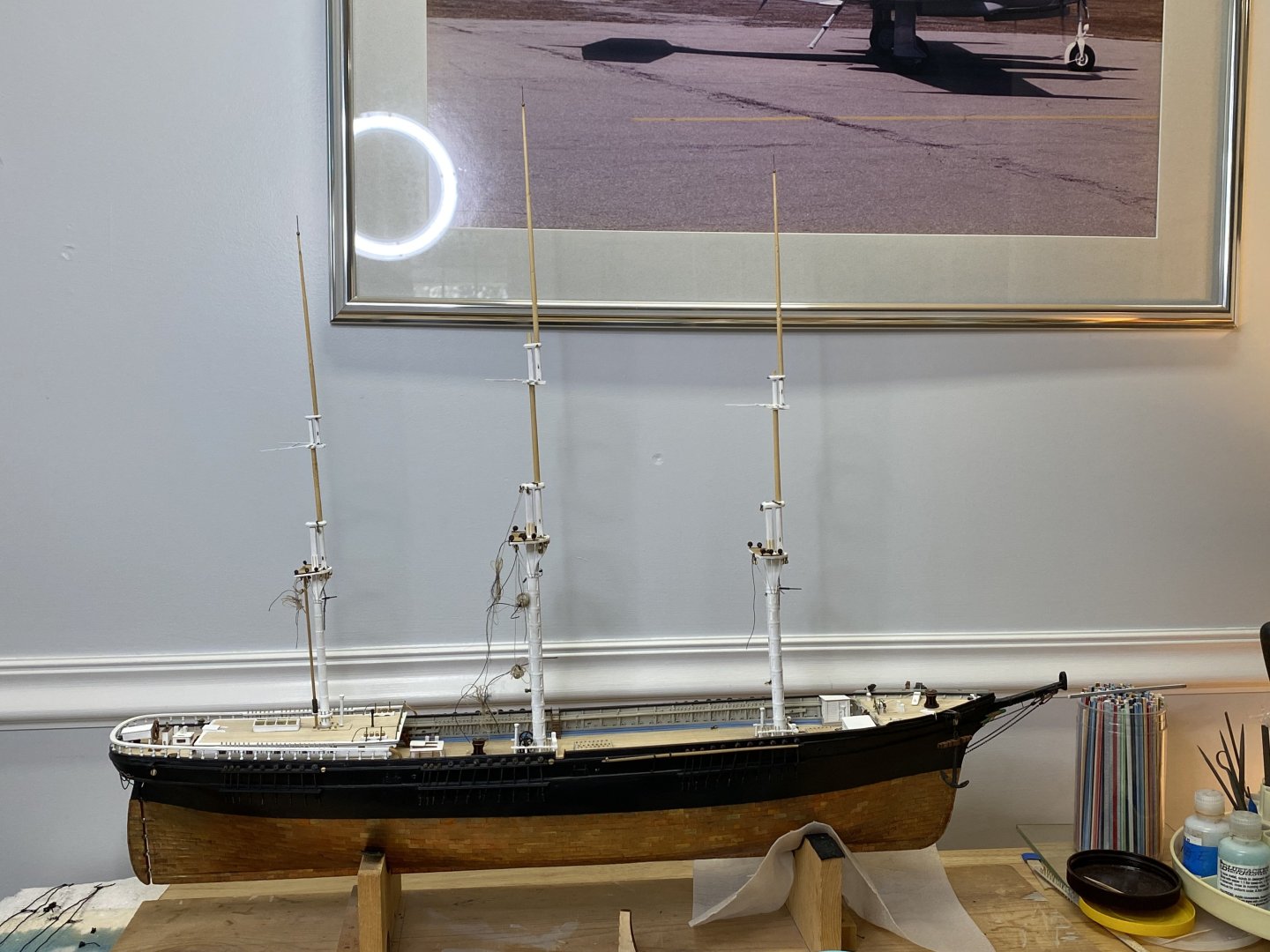
Rick310
NRG Member-
Posts
799 -
Joined
-
Last visited
Content Type
Profiles
Forums
Gallery
Events
Everything posted by Rick310
-
Looking good Jared! You keep inching closer to the finish line! Well done!! Have a Happy New Year! Rick
- 431 replies
-
- Flying Fish
- Model Shipways
-
(and 2 more)
Tagged with:
-
I decided to put the mast sections together to see how they look and to check for alignment. Still want to add some blocks and rigging line, but that is going to take some time as I figure out the sizes and lengths and prepare the lines. Also , started to make the jib boom. Merry Christmas to all! Rick
- 351 replies
-
- Flying Fish
- Model Shipways
-
(and 1 more)
Tagged with:
-
Thanks George! I’m loving retirement and having the time to work on the Fish! Rick
- 351 replies
-
- Flying Fish
- Model Shipways
-
(and 1 more)
Tagged with:
-
Thanks Jared! Loving retirement! Rick
- 351 replies
-
- Flying Fish
- Model Shipways
-
(and 1 more)
Tagged with:
-
Well, September was quite a month. Finally retired after 40 years as an Endodontist (root canal specialist) and 45 years as a dentist! The admiral and I celebrated by taking a Viking Meditation cruise in between clearing out the office and our daughter’s wedding in Ohio. The fore and main tops still needed to be painted, planked and fitted out. Both the main and fore topmast were made prior to the cross trees to insure accurate spacing. The topgallant masts were also made as described by EdT in the YA books. Finally got the tops planked and fitted out. The topgallant tops were made same as the lower tops. The spreaders are 1/32 inches brass. I found it extremely difficult to cut .030 inches thick brass on the table saw and ended up filling them to a rough shape. Fortunately after painting, the inconsistencies are not very noticeable. I made the mistake of using copper for the cross bar. This was much too soft and didn’t hold the shape of the spreaders. I ended up desoldering them and replaced them with 24 gauge brass wire that I filled flat on 2 opposing sides. This worked great and was easy to do and I will use brass wire again if I ever need to make spreaders in the future. Both sets of caps were made and banded with thin ,005 thick brass strips. Finally, items such as bolsters, fid plates chapping battens, blocks and sheaves were added. I used 26 gauge copper wire for the futtock shrouds which were glued to the futtock band with cyano. Shackles were made with 26 gauge copper wire. Eyebolts for the shackles were made with either 26or 28 gauge copper wire depending on the location. I’m trying to avoid using 28 gauge copper wire as I have had problems with it breaking, especially when it is manipulated. The eyebolts, once twisted up seem strong enough. Shackles were made per EdT, at approximately 1/16 inche . All eyebolts that have lines attached, have shackles. Finally, the ball shaped trucks were turned on the lathe, painted gold and I will use either straight pins or brass rod for the spires. I think this completes the masts. I added some of the rigging lines such as the toping lifts and mizzen course brace lines at this time as they will be difficult to access later.
- 351 replies
-
- Flying Fish
- Model Shipways
-
(and 1 more)
Tagged with:
-
Well done!!! The way nd is in sight! Rick
- 431 replies
-
- Flying Fish
- Model Shipways
-
(and 2 more)
Tagged with:
About us
Modelshipworld - Advancing Ship Modeling through Research
SSL Secured
Your security is important for us so this Website is SSL-Secured
NRG Mailing Address
Nautical Research Guild
237 South Lincoln Street
Westmont IL, 60559-1917
Model Ship World ® and the MSW logo are Registered Trademarks, and belong to the Nautical Research Guild (United States Patent and Trademark Office: No. 6,929,264 & No. 6,929,274, registered Dec. 20, 2022)
Helpful Links
About the NRG
If you enjoy building ship models that are historically accurate as well as beautiful, then The Nautical Research Guild (NRG) is just right for you.
The Guild is a non-profit educational organization whose mission is to “Advance Ship Modeling Through Research”. We provide support to our members in their efforts to raise the quality of their model ships.
The Nautical Research Guild has published our world-renowned quarterly magazine, The Nautical Research Journal, since 1955. The pages of the Journal are full of articles by accomplished ship modelers who show you how they create those exquisite details on their models, and by maritime historians who show you the correct details to build. The Journal is available in both print and digital editions. Go to the NRG web site (www.thenrg.org) to download a complimentary digital copy of the Journal. The NRG also publishes plan sets, books and compilations of back issues of the Journal and the former Ships in Scale and Model Ship Builder magazines.



























